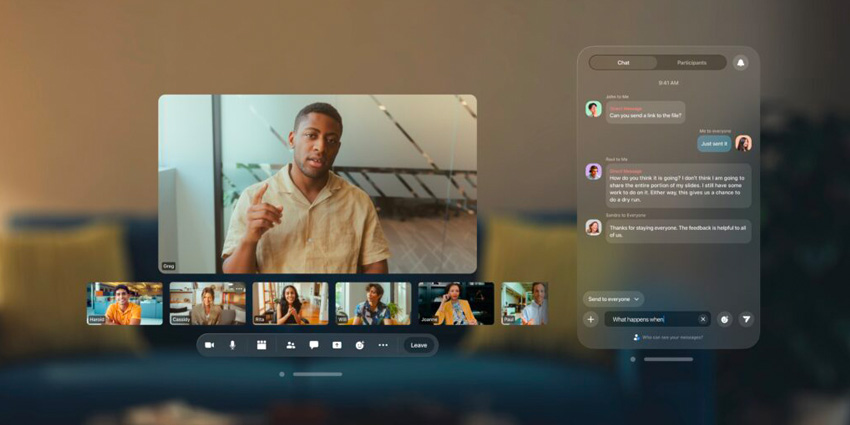This week, VR and MR device vendor Goertek partnered with hand-tracking experts Ultraleap to announce a VR/MR headset reference design that follows from Qualcomm’s XR2+ Gen 2 chipset revealment yesterday – where Qualcomm also revealed the new reference design.
The design aims to support OEMs in creating MR/VR devices with high-quality hand-tracking features from Ultraleap’s Gemini framework – Ultraleap describes this as “the fastest, most advanced, and reliable hand tracking” solution on the market. Ultraleap’s computer vision and machine learning models also enable low-cost hand-tracking integration for enterprise end users.
The reference design is available to customers now, ready for a range of industrial-specific headset vendors, allowing teams across construction, factories, and marketing to adopt innovative XR hardware.
Tom Carter, CEO and co-founder at Ultraleap, said:
We believe natural hand interactions will be to VR what touch was to smartphones. Integrating Ultraleap’s hand tracking directly onto existing camera sensors makes it very easy for customers to design and launch new headset products. This outstanding collaboration means that companies looking to launch new VR headset products can now easily develop a headset built with the world’s best hand tracking from the world’s leading headset manufacturer. It’s an unbeatable combination.
Ultraleap also notes how hand tracking is becoming a “mandatory feature” of major available and upcoming headsets from firms including Microsoft, Meta, and Apple. The firm also explains how hand tracking helps workers remain immersed in enterprise-grade operations such as training and customer experience platforms.
Marvin Chang, the Corporate Vice President and Global Head of Marketing for Goertek, explained that the VR/MR headset firm is “committed to providing excellent overall solutions for XR headsets.”
Moreover, Chang added:
This integration with Ultraleap shows that we can bring the best in class cutting edge technology, like hand tracking, in a manufacturable form factor direct to the world’s biggest OEMs. The timing of this new reference design with Goertek reflects the demand for natural interaction that we are seeing all across the XR industry, which will enable OEMs to reduce time-to-market for their next-generation VR headset with brilliant hand tracking interactions.
Qualcomm Partners with Google and Samsung for New 4K XR Chipset
Yesterday, Qualcomm Technologies first revealed the reference design when it launched the Snapdragon XR2+ Gen 2 Platform, a new Snapdragon chipset designed to enhance the quality of XR displays, visuals, and the overall user experiences. The upgraded chipset will support AR smart glasses with integrated AI features, and the firm will sell its new chip as an affordable option for workplace AR/VR/MR.
The Snapdragon platform provides the foundation for AR/VR/MR application development and deployment, and the XR2+ Gen 2 chipset helps boost consumer and enterprise-grade XR use cases on headsets and smart glasses. Partnerships with Samsung, Google, Tobii, and Goertek provide the framework to provide visual clarity for gaming and productivity applications.
Android ecosystem support enables developers to “take advantage of Snapdragon XR2+ Gen 2’s capabilities and enable new experiences” in collaboration with Samsung and Qualcomm to drive the future of immersive and spatial XR, remarks Shahram Izadi, Vice President of AR at Google. The Snapdragon XR2+ Gen 2 chipset also brings “spectacularly clear visuals” to use cases, including room-scale screens, life-size overlays, and virtual desktops.
Qualcomm says the new chipset earns its “+” by bringing “realistic, detailed experiences” to MR and VR applications. The chipset can achieve this with an improved GPU power of 15% and CPU frequency of 20%, allowing AR/MR devices to track users with more than 12 concurrent cameras and improve AI assistant features on smart glasses or headsets.
To support the chipset, Qualcomm is working with more than 100 partners, including Samsung, HTC Vive, Immersed, and Play for Dream, to leverage the hardware in real-world settings. Additionally, Qualcomm is developing an MR & VR reference design, which Goertek helped create and Tobii assisted by integrating its eye-tracking technology.







